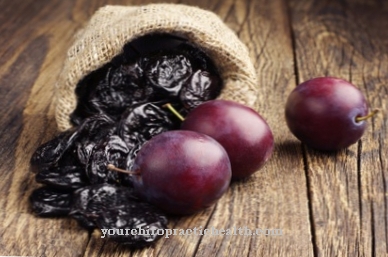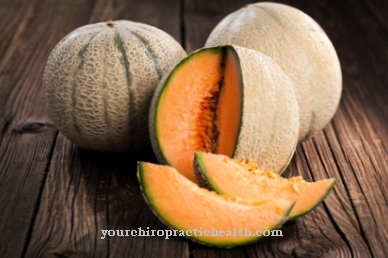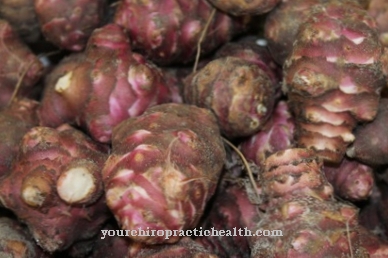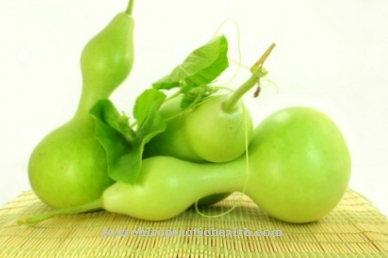Kefe is the Swiss name for Sweet peas or Snow peas. The technical term is Pisum sativum saccharatum. The crispy, sweet pods with the small seeds are not yet grown here commercially, but are available as imported goods.
What you should know about kefe

Kefen are undemanding in terms of soil quality and climatic conditions. They are found in North America, Europe, India, and Africa. Depending on the variety, sowing takes place between the end of March and the end of June. The young shoots grow quickly and soon develop flowers. While these are still closed, the sugar peas fertilize themselves.
Since kefen is a vegetable that is not yet fully ripe, it is harvested continuously, from May to August. Snow peas differ from other peas in that they do not form an inedible parchment shell inside the pods. That is why they are completely edible - mostly with the exception of the thread along the sleeve. They taste raw, steamed and fried. The unusually sweet taste makes the kefen very popular with children too. Above all, the slightly floury feeling of other peas in the mouth is eliminated. Instead, the seeds are barely developed and almost as crisp as the entire pod. Sweet peas are among the oldest cultivated plants.
Nevertheless, they are grown almost exclusively for our own consumption, which works well in the garden as well as in the balcony tub. All you have to do is ensure sufficient irrigation. Snow peas grow bushy and reach heights of around 60 to 100 centimeters. Tall varieties are usually kept with a trellis. The very large leaves partially cover the fruits, which makes harvesting a bit tedious. But they are well protected from birds that like to use them.
The name Kaiserschote is of historical origin: in 1433 there was a decree in England that only allowed the consumption of the nobility. Louis XIV had a pea garden planted in Louvre Park and enjoyed the fresh vegetables instead of the previously dried ones. A project for the cultivation and selection of old seed varieties is ongoing in Austria.
Importance to health
Kefen are among the healthiest vegetables. In contrast to other and ripe legumes, they only have a slight bloating effect. Instead, they have a particularly high fiber content. If you want to eat a diet rich in fiber, you shouldn't do without the sweet pods.
Such a diet not only promotes digestion, but also flushes more toxins out of the body. This detoxifying effect manifests itself in an overall good state of health, less stress on the liver and a smooth complexion. The protein content of snow peas is also very high. Therefore, they can have a positive effect on cholesterol levels. Kefen are very suitable for a diet for weight loss. Not only are they low in calories, but because of the sweet taste they can also curb cravings for chocolate.
The carbohydrates are nutritious and long filling. The many vitamins and minerals are also very healthy and beneficial in a diet because they strengthen the immune system and provide vitality. The iron content in particular has a positive effect on weakened people. The abundant potassium drains the body.
Ingredients & nutritional values
100 grams of sugar snap peas have only 68 calories. Roughly half (21.5 grams) of the 41.2 grams of carbohydrates are fiber. The protein content is almost as high at 20 grams. On the other hand, the fat content of the peas is very low at just under 3.5 grams. A significant amount of vitamins is E with 2.28 milligrams, niacin with 3.1 milligrams and, above all, C with 9.4 milligrams.
The snow peas also contain many minerals. These are mainly potassium with 810 milligrams, calcium with 124 milligrams, magnesium with 155 milligrams and phosphorus with 407 milligrams per 100 grams of raw material. The iron content of just under 7 milligrams is also significantly higher in beefs than in most other vegetables.
Intolerances & allergies
Kefen is a healthy food. Nonetheless, intolerances have been found that prohibit certain people from consuming snow peas. People with a pea allergy should definitely avoid peas. This also applies to allergies to mugwort pollen; this can lead to a cross-reaction with peas.
Patients with histamine and / or salicylic acid intolerance do not have to do without sugar snap peas completely, but they are only allowed to consume them in moderation. Peppers do not have the same flatulence as other legumes, but if you have a sensitive digestive tract, you should do without the sweet pods. Since the vegetables have a dehydrating effect, all dishes should be consumed with sufficient water.
Shopping & kitchen tips
Sugar snap peas are harvested in the summer months. You can rarely find them here. However, they are available at very well-stocked greengrocers, in some supermarkets and in organic shops. The country of origin should be taken into account when buying the beefs; The vegetables from developing or emerging countries are often contaminated with pesticides - organic quality is therefore always preferable.
The freshness can be recognized by the fact that the pods are green and crunchy and squeak easily when rubbed together. While supermarkets offer the snow peas shrink-wrapped, they are also available loose from retailers. Kefen can be brewed in your own garden and on the balcony. Seeds are available in nurseries and online stores. The vegetables should be processed as quickly as possible, otherwise the pods will have a bitter taste and the valuable ingredients will be lost.
They keep in the vegetable drawer for about three days, provided they are wrapped in a damp cloth. Kefen can also be frozen well. To do this, after cleaning, they are immersed in boiling water for three minutes and then placed in ice water. They keep in the freezer bag for up to two years. If you want to eat them raw afterwards, you have to thaw them slowly; otherwise it is sufficient to briefly cook them in boiling water.
Preparation tips
Kefen taste good in many ways: raw as a salad and steamed or fried as a vegetable. They enrich many other dishes with their sweet taste. Tender meats such as poultry go very well with it. Tuna, salmon and scampi are also served with it.
In combination with young carrots and asparagus, the tenderness comes into its own, both in the salad and with the vegetable side dish. Contrasting flavors are very interesting: in combination with dark meat, chilli and even spring onions, delicious dishes are possible. When cooking, make sure not to leave the peppers in a pot or pan for too long, so that the crisp freshness is still noticeable when eating.













.jpg)

.jpg)
.jpg)











.jpg)